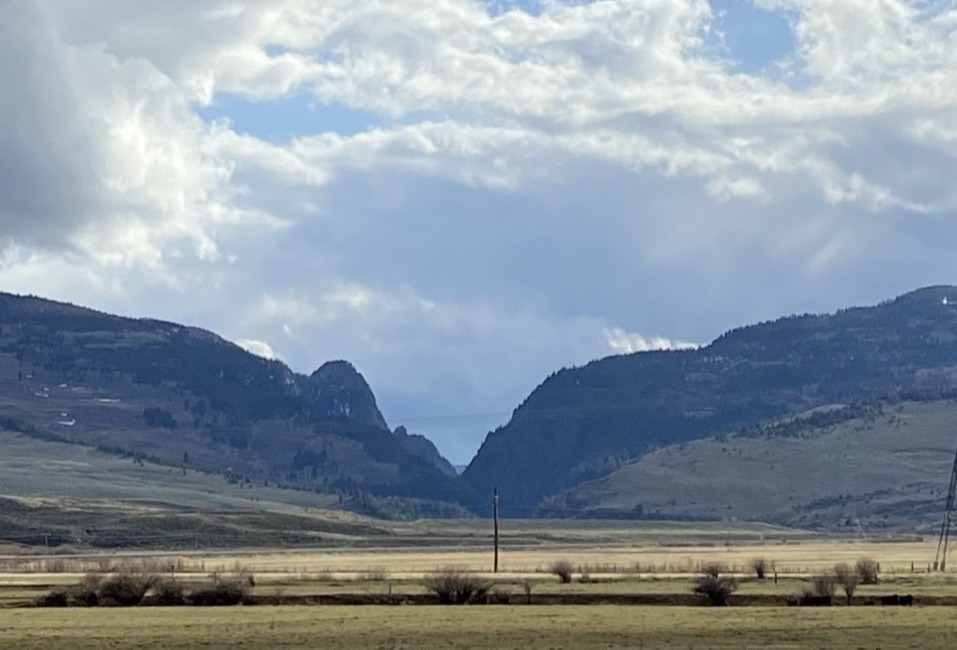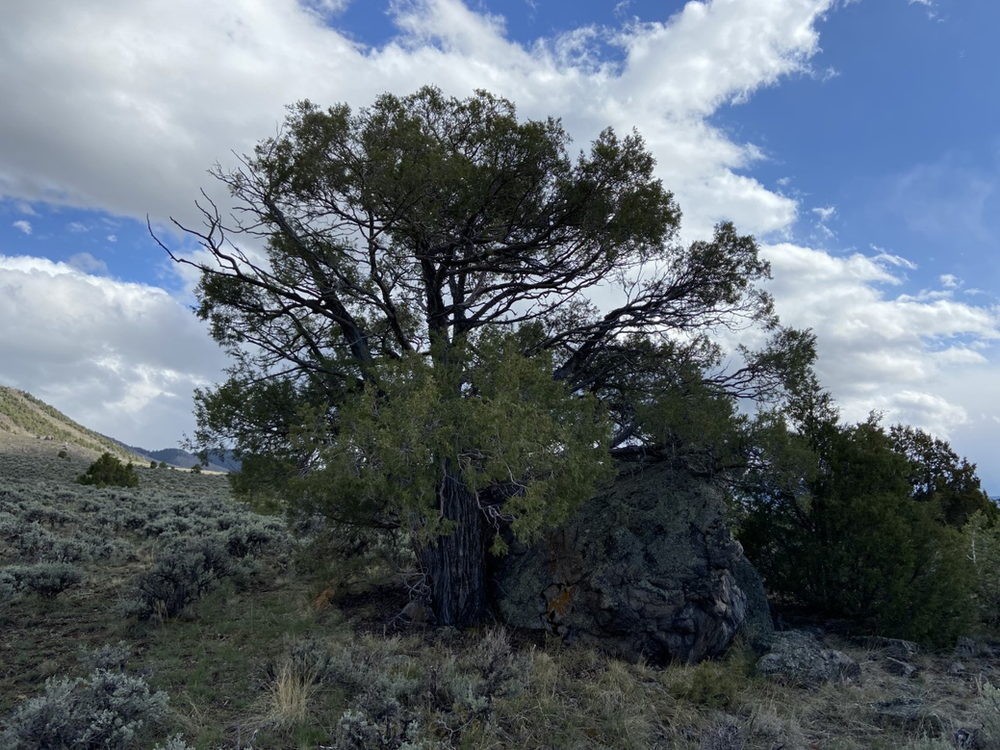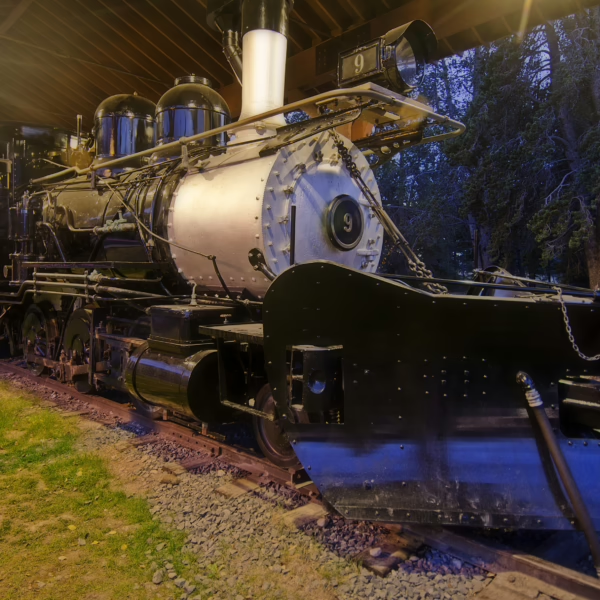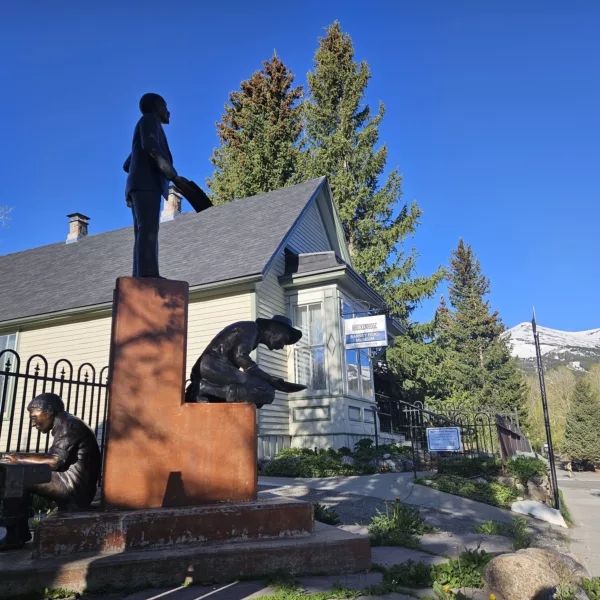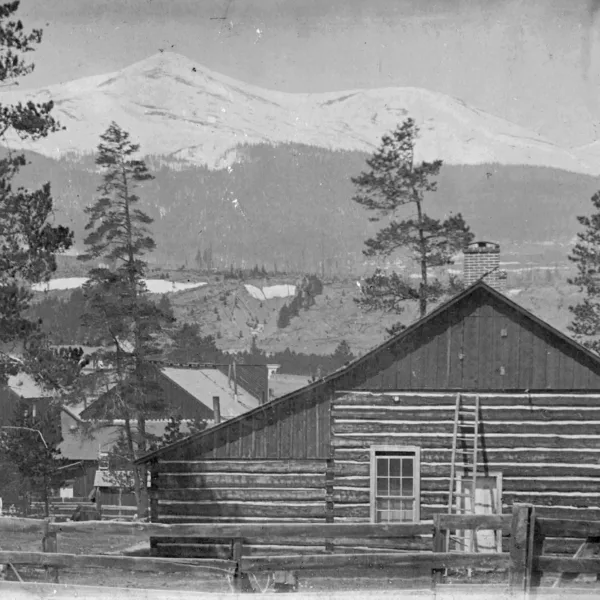Sam Adams y el grupo de exploración y prospección del río Colorado
May 15, 2021 | Category: Nuestra historia colectiva
En Breckenridge no faltan los timadores y estafadores. Entre los criminales famosos se encuentran Pug Ryan y su robo con asesinato en 1898 y la malversación y desaparición de Scoop Daniels en el siglo XXI. Pero nadie estafó a la comunidad de Breckenridge como Sam Adams, "Capitán Sam Adams", insistía. Compitiendo con John Wesley Powell en la búsqueda de una ruta fluvial navegable hacia el Pacífico, Sam Adams llegó a Breckenridge en 1869 para iniciar su exploración.
En 1869, Breckenridge tenía pocos años. Los embriagadores días de la fiebre del oro se habían desvanecido y la ciudad avanzaba a tientas con una reducida población de mineros, comerciantes y un "variopinto grupo de rudos individuos", según el escritor de viajes Bayard Taylor en 1866. Sin embargo, el Oeste era un lugar apasionante e inexplorado. El que pronto sería famoso John Wesley Powell se preparaba para su expedición por el río Green hasta el desconocido Colorado.
Sam Adams navegó por las aguas del bajo Colorado ya en 1864, intentando establecer una compañía de transporte fluvial de mercancías. Barcos de vapor de poco calado surcaban el río desde la desembocadura en el Golfo de California río arriba, transportando carga y suministros militares más de 100 millas tierra adentro. Utilizando esta experiencia como tarjeta de visita, Adams intentó entrar en la expedición de Powell, que se reunía en Green River, Wyoming, donde el nuevo ferrocarril transcontinental transportaba los barcos y suministros de Powell.
Armado con una carta de agradecimiento del ex Secretario de Guerra del Presidente Lincoln, Edwin Stanton, Adams floreció la misiva como si fuera su billete para la expedición de Powell. Pero el grupo exploratorio de Powell estaba completamente autofinanciado. Powell no tenía ninguna razón para traer al recluta de Stanton, especialmente uno que actuaba como un comandante, según Wallace Stegner en su biografía de Powell, Beyond the Hundredth Meridian.
Adams estaba lleno de una confianza infundada. Tan seguro estaba de la facilidad de una vía fluvial desde las montañas del Territorio del Colorado hasta el Pacífico, que se convenció a sí mismo de que era algo inevitable. Pensó que en sólo dos millas de desnivel, desde la divisoria continental hasta el océano, se podría recorrer en pocos meses.
Impávido ante el rechazo de Powell, Adams decidió encontrar la ruta fluvial por su cuenta. Sin embargo, carecía de recursos, provisiones, alimentos, barcos, armas e incluso mapas. Su única posesión era la más valiosa: su don de persuasión.
Mientras Powell asumió la misión de recorrer el río Green hasta su confluencia con el Colorado y explorar lo desconocido desde allí, Adams trató de conectar con el Colorado siguiendo uno de sus principales afluentes superiores: el río Blue. Pasó por Georgetown de camino a Breckenridge, y el periódico de esa comunidad proporciona algunas de nuestras descripciones más detalladas de Adams y sus planes. El Colorado Miner (Georgetown) editorializó: "...el viaje nos parece muy peligroso e inoportuno".
La confianza de Adams en sus propias capacidades, unida a su certeza de que la ruta fluvial era fácilmente navegable, persuadió a los habitantes de Breckenridge para que le apoyaran. En Breckenridge, Adams encontró una comunidad dispuesta, que soñaba con la misma gloria y riqueza que él. Incluso el nombre les atrajo: El Partido de Exploración y Prospección del Condado de Summit y el Río Colorado.
Los habitantes de Breckenridge le equiparon por completo. El manuscrito de Adams enumera los recursos que le proporcionaron los breckenridgianos: cuatro botes (de madera verde) de veintidós pies de largo y cuatro de ancho; provisiones para tres meses, incluyendo tocino, harina y café; y rifles de avancarga y revólveres con doscientos cartuchos de munición cada uno.
Once voluntarios de Breckenridge, todos ellos mineros "con experiencia en los rudos caminos de una vida aventurera", acompañaron a Adams. Su equipo incluía herramientas de minero, y aprovecharon las oportunidades para buscar oro a lo largo de las primeras millas de su ruta.
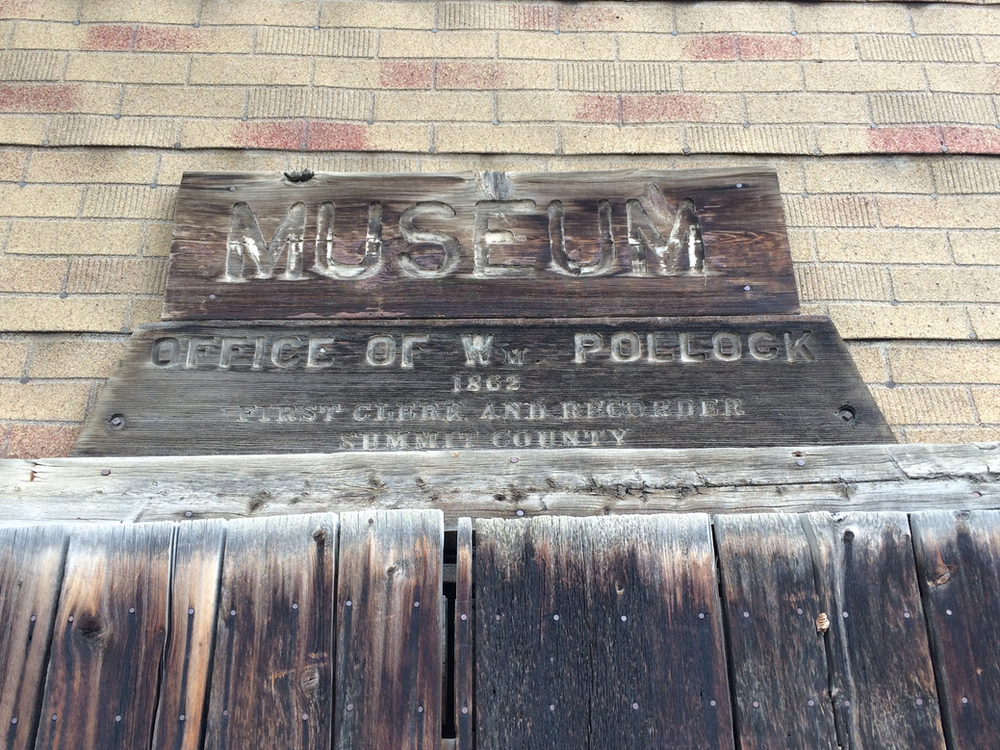
El periódico Colorado Miner se mostró escéptico ante la expedición de Adams, pero la gente de Breckenridge se dejó llevar. Ciudadanos prominentes tomaron parte activa. El secretario del condado, W.P. Pollock, fue el tesorero de la expedición. El grupo de despedida incluía al hotelero Rankin y al juez Silverthorn.
De la gente de Breckenridge, Adams escribió: "...separándome de tales amigos. Aquí, en los límites extremos de la civilización, había encontrado inesperadamente una comunidad que, en inteligencia, iniciativa y valor moral, era superior a cualquier otra que hubiera conocido".
La expedición se embarcó en el río Blue y partió de Breckenridge el lunes 12 de julio de 1869 en dos de los cuatro botes. Atracaron a 2,5 millas por debajo del pueblo, más o menos donde hoy se encuentra el Breckenridge Building Center. Los otros dos botes fueron transportados en carreta hasta un punto a 12 millas por debajo del pueblo. Antes del embalse de Dillon, esas doce millas medirían más o menos hasta donde se encuentra actualmente la ciudad de Silverthorne. Más tarde, la ciudad recibiría el nombre del juez Silverthorn (sin "e" al final).
En su primera noche fuera, el grupo disfrutó del pan ofrecido por la Sra. Silverthorn, conocida por sus deliciosos productos de panadería. La mañana de su partida, una asamblea se reunió para despedirlos con un discurso del juez Silverthorn y vítores de la multitud. Adams adornó su barco con una bandera confeccionada por las damas de Breckenridge: "Del oeste de Colorado a California, saludos". El juez Silverthorn obsequió a Adams con un perro joven, del que nunca volveremos a oír hablar. Adams gritó la orden "Cut Loose" y se pusieron en marcha.
La catástrofe sobrevino de inmediato. Tres de las cuatro embarcaciones se hundieron en el "Rocky Canyon", en los rápidos conocidos hoy como Boulder Creek, destruyendo una de ellas y perdiendo suministros. Tres hombres desertaron al día siguiente. Menos de una semana después de la partida, uno de los miembros regresó a pie a Breckenridge en busca de "instrumentos" y cerillas. El 21 de julio, otra embarcación quedó destrozada en unos rápidos bajo el embalse que hoy llamamos Green Mountain, y otros cuatro voluntarios abandonaron el viaje y regresaron a pie a Breckenridge.
El 22 de julio, el periódico Colorado Miner informó por boca de los hombres que regresaron a Breckenridge que los "terrores acuáticos se intensificaban a cada milla de avance". Todavía no habían llegado al Grand River.
Cojeando con dos barcas y una tripulación muy reducida, Adams llegó a la confluencia de los ríos Azul y Grand en poco más de una semana. El río que hoy conocemos como Colorado, entre la cabecera y la confluencia con el Green River, se llamaba entonces Grand River.
Adams pasó una semana en la confluencia (cerca de la actual Kremmling), durante la cual envió a otro hombre a Hot Sulphur Springs para enviar y recoger correo y suministros. Según Stegner, necesitaban más cerillas.
El 30 de julio, Adams escribió: "He inspeccionado el Gran Cañón inmediatamente debajo de nosotros, y lo encuentro, inesperadamente, muy favorable". Efectivamente, las primeras cuatro millas por debajo de la confluencia discurren por hermosos parajes sobre aguas chispeantes y llanas hasta la sima que hoy conocemos como Cañón del Gore.
Adams lo llamó Gran Cañón. Powell lo bautizó Cañón del Cedro durante su expedición exploratoria de 1868. Hoy en día, los navegantes saben que este tramo del río es revoltoso en buenas condiciones, con sólidos rápidos de clase IV y V.
Adams tardó cuatro días en recorrer ¾ de milla, bajando sus barcas por cada rápido con cuerdas. Uno de los botes se perdió casi de inmediato. Para el 7 de agosto, el último bote estaba destrozado. Todas las provisiones y el equipo personal desaparecieron en los rápidos. Los supervivientes se animaron al encontrar un trozo de tocino en la orilla.
Adams y el resto de su tripulación construyeron una balsa, luego otra y otra. Finalmente abandonó la expedición el 13 de agosto, río arriba del pueblo que conocemos como Dotsero. Según The Colorado Miner, Adams regresó a Breckenridge el 26 de agosto, aunque no hay constancia de cómo fue recibido. Mantuvo su positivismo: era un "maravilloso país abierto", proclamó. En su haber, Adams fue el primero en descender el curso superior del río Colorado y ninguno de sus tripulantes murió.
Mark Fiester en Blasted, Beloved Breckenridge compartió la historia del capitán Sam Adams, citando el libro de Stegner para poblar la mayor parte del capítulo. Fue Fiester quien bautizó la misión de Adams como la "Armada Breckenridge". Se trata de un nombre inexacto para la exploración. Una Armada es una expedición militar gubernamental y ése no fue el caso ni de Powell ni de Adams. Fueron viajes creados y financiados por ellos mismos. Tanto Adams como Powell buscaron asignaciones del gobierno para reembolsar sus viajes a posteriori. Adams nunca consiguió reunir ni un céntimo.
Stegner llama a Adams "descabellado", "lunático" y "un saco de viento". Puede que lo fuera. Hasta el día de su muerte, Adams guardó rencor por la falta de reconocimiento y reembolso, y por la fama que alcanzó Powell. Un escritor observó que Adams podría haber obtenido el reconocimiento que buscaba por "abrir el país" si no hubiera intentado con tanta vehemencia menospreciar a Powell.
Wallace Stegner es un autor ganador del premio Pulitzer con un agudo sentido del humor. Si desea conocer un relato muy entretenido, preciso y bien documentado sobre Sam Adams, el Colorado River Exploring Party y John Wesley Powell, consulte su obra fundamental: Beyond the Hundredth Meridian.
Para saber más sobre la historia de Breckenridge, visite un museo, haga una visita guiada o consulte los artículos de nuestro blog.
Escrito por: Leigh Girvin


